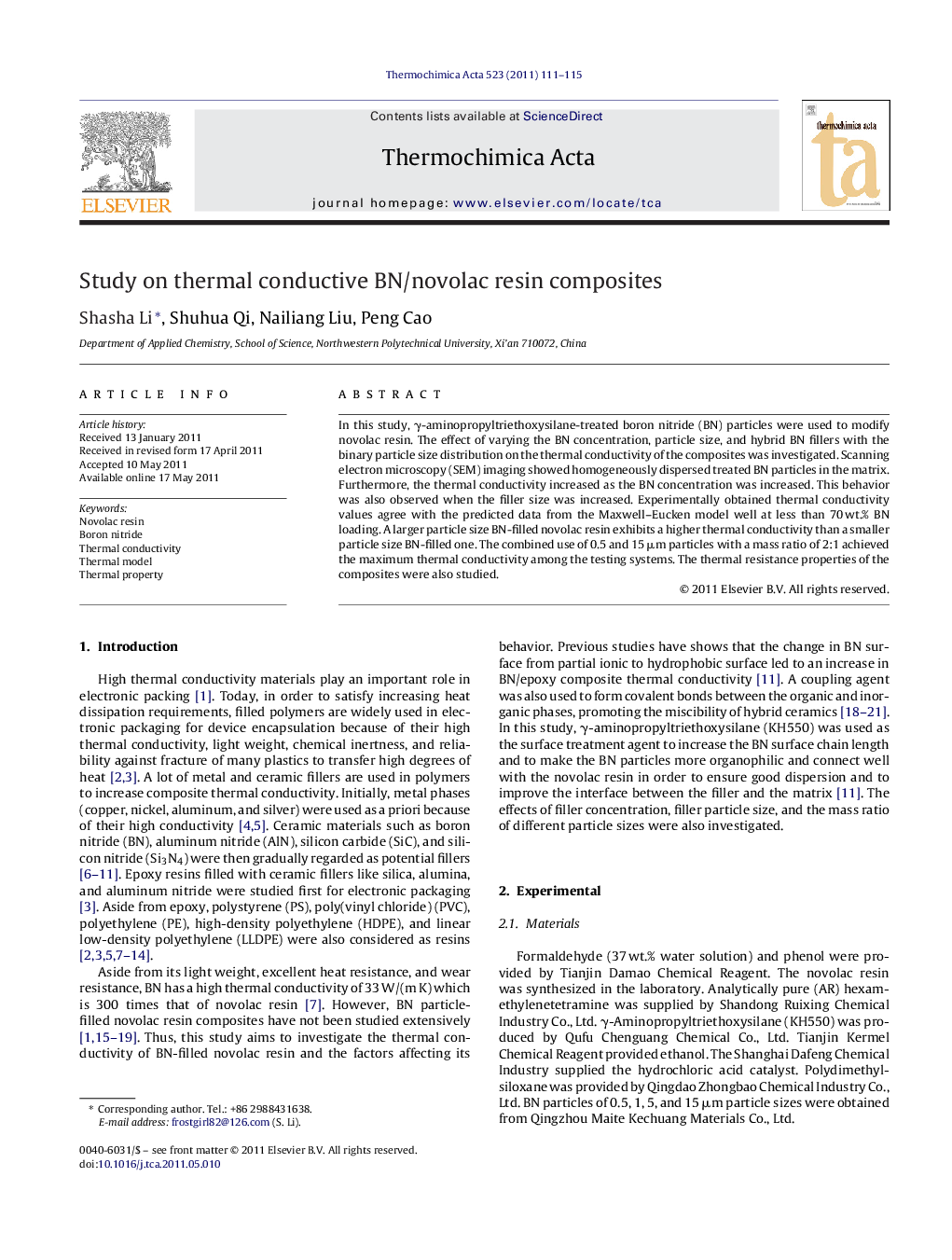| Article ID | Journal | Published Year | Pages | File Type |
|---|---|---|---|---|
| 674397 | Thermochimica Acta | 2011 | 5 Pages |
In this study, γ-aminopropyltriethoxysilane-treated boron nitride (BN) particles were used to modify novolac resin. The effect of varying the BN concentration, particle size, and hybrid BN fillers with the binary particle size distribution on the thermal conductivity of the composites was investigated. Scanning electron microscopy (SEM) imaging showed homogeneously dispersed treated BN particles in the matrix. Furthermore, the thermal conductivity increased as the BN concentration was increased. This behavior was also observed when the filler size was increased. Experimentally obtained thermal conductivity values agree with the predicted data from the Maxwell–Eucken model well at less than 70 wt.% BN loading. A larger particle size BN-filled novolac resin exhibits a higher thermal conductivity than a smaller particle size BN-filled one. The combined use of 0.5 and 15 μm particles with a mass ratio of 2:1 achieved the maximum thermal conductivity among the testing systems. The thermal resistance properties of the composites were also studied.
► Boron nitride (BN) particles were used to modify novolac resin. ► BN particles were pretreated by γ-aminopropyltriethoxysilane. ► The thermal conductivity trend of composite almost agrees with the predicted data from the Maxwell–Eucken model. ► At BN concentration of 80 wt.%, thermal conductivity value of composite is 4.5 times that of pure novolac resin. ► Combined use of the larger and smaller particles with a mass ratio of 1:2 provides the composites with the maximum thermal conductivity among the testing systems. ► The composite thermal property also increases with an increase in the BN concentration.
